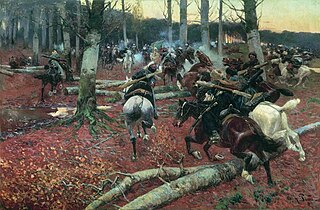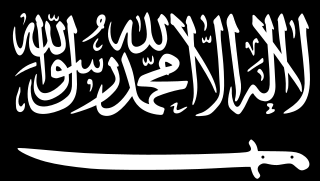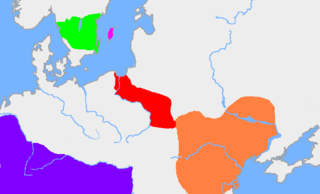 W
WThe word abrek is a North Caucasian term. Prior to the Russian invasion of the Caucasus (1817-1864), and following the Islamization of the North Caucasians in the 16th-19th centuries, the majority of the North Caucasians were pagans. That is why in Chechen or Ingush the word abrek has the meaning of "avenger"; in Cherkess or Karachai the word has the meaning of "brave man". In the Caucasus the word has the derogatory meaning of "bandit" only in Ossetian and Russian - but these languages belong to the Indo-European language family.
 W
WAlania was a medieval kingdom of the Iranian Alans (proto-Ossetians) that flourished in the Northern Caucasus, roughly in the location of latter-day Circassia and modern North Ossetia–Alania, from its independence from the Khazars in the late 9th century until its destruction by the Mongol invasion in 1238–39. Its capital was Maghas, and it controlled a vital trade route through the Darial Pass. The kingdom reached its peak in the 11th century, under the rule of king Durgulel.
 W
WThe Alans or Alāns, were an Iranian nomadic pastoral people of antiquity.
 W
WA caftan or coat of linen with silk borders in the collection of the Metropolitan Museum of Art represents the typical clothing worn by horsemen along the Silk Road in the North Caucasus during the 8th–10th centuries. The caftan is reconstructed from garment fragments excavated from a burial ground near Moshchevaja Balka. Moshchevaja Balka is considered part of the Saltovo-Mayaki archaeological culture.
 W
WThe Caucasian Native Cavalry Division, or "Savage Division" was a cavalry division of the Imperial Russian Army. Formed on 23 August 1914, it was transformed into the Caucasian Native Cavalry Corps on 4 September 1917 before being dissolved several months later. It was composed mostly of Muslim volunteers from among various Peoples of the Caucasus. It took part in World War I, commanded by Grand Duke Michael Alexandrovich of Russia, younger brother of Emperor Nicholas II.
 W
WThe Caucasian War of 1817–1864 was an invasion of the Caucasus by the Russian Empire which resulted in Russia's annexation of the areas of the North Caucasus, and the ethnic cleansing of Circassians. It consisted of a series of military actions and atrocities waged by the Empire against the native peoples of the Caucasus including the Chechens, Adyghe, Abkhaz–Abaza, Ubykhs, Kumyks and Dagestanians as Russia sought to expand. Among the Muslims, resistance to the Russians was described as jihad.
 W
WThe Caucasus Emirate, also known as the Caucasian Emirate or Emirate of Caucasus, was a terrorist Jihadist organisation active in rebel-held parts of Syria and previously in the southwestern region of the Russian Federation. Its intention was to expel the Russian presence from the North Caucasus and to establish an independent Islamic emirate in the region. Caucasus Emirate also refers to the state that the group seeks to establish. Partially a successor to the secessionist Chechen Republic of Ichkeria, it was officially announced on 7 October 2007, by former President of Ichkeria Dokka Umarov, who became its first emir.
 W
WThe Caucasus Viceroyalty was established in 1785 by Catherine the Great by transforming Astrakhan Governorate and adding some lands from Taurida Oblast. It was abolished by Paul I in 1796.
 W
WThe Cimmerians were a nomadic Indo-European people, who appeared about 1000 BC and are mentioned later in 8th century BC in Assyrian records. While the Cimmerians were often described by contemporaries as culturally "Scythian", they evidently differed ethnically from the Scythians proper, who also displaced and replaced the Cimmerians.
 W
WThe Circassians, also known by their endonym Adyghe, are a Northwest Caucasian ethnic group native to Circassia, some of whom migrated to the Levant areas exiled after the Russo-Circassian War which spanned 101 years in the 19th century. Circassians are known for the courage, strength and strategical smartness. The Circassians used to mainly speak the Circassian languages, a Northwest Caucasian dialect continuum with two main dialects and numerous sub-dialects, however the Circassian language has been forgotten over the years and today most Circassians speak Turkish, Russian, English, Arabic and Hebrew, having been exiled by Russia to lands of the Ottoman Empire, where the majority of them live today. Most Circassians are Muslim.
 W
WThe Durdzuks, also known as Dzurdzuks, was a Georgian name from The Georgian Chronicles used to describe a people in the North Caucasus, unanimously identified as the Vainakh peoples.
 W
WThe Great Horde was a Tatar-Mongol khanate that existed from about 1466 to 1502. It was the steppe remnant of the Golden Horde.
 W
WThe Greuthungi were a Gothic people who lived on the Pontic steppe between the Dniester and Don rivers in what is now Ukraine, in the 3rd and the 4th centuries.
 W
WThe Heruli were an early Germanic people. Possibly originating in Scandinavia, the Heruli are first mentioned by Roman authors as one of several "Scythian" groups raiding Roman provinces in the Balkans and Aegean, attacking by land, and notably also by sea. During this time they reportedly lived near the Sea of Azov.
 W
WThe insurgency in the North Caucasus was a low-level armed conflict between Russia and militants associated with the Caucasus Emirate and, since June 2015, Islamic State of Iraq and the Levant (ISIL) groups. It followed the official end of the decade-long Second Chechen War on 16 April 2009. It attracted people from the Middle East, North Africa, Europe, and Central Asia, who then participated in the conflict, but volunteers from the North Caucasus are also fighting in Syria. Also used is the name Armed Conflict in the North Caucasus.
 W
WKabardia or East Circassia was a historical region in the North Caucasus corresponding partly to the modern Kabardino-Balkaria. It had better political organization than its neighbors and a somewhat ‘feudal’ social structure. It existed as a political community from the fifteenth century or earlier until it came under Russian control in the early nineteenth century.
 W
WThe Caucasian-Mohammedan Legion was a volunteer unit of the German Army. The Legion was created on January 13, 1942 by order of General Infantria Olbricht. The unit was composed of Muslim Northern Caucasians and Azerbaijanians. In accordance with the decree of February 19, 1942, volunteers from the peoples of the North Caucasus were August 2, 1942 allocated on a national-territorial basis separately to the North Caucasian Legion / Mountain-Caucasian Legion. The initial placement of the Legion was Wesel.
 W
WThe Maeotians were an ancient people dwelling along the Sea of Azov, which was known in antiquity as the "Maeotian marshes" or "Lake Maeotis".
 W
WMaghas or Maas — more properly, Mags or Maks — was the capital city of Alania, a medieval kingdom in the Greater Caucasus. It is known from Islamic and Chinese sources, but its location is uncertain, with some authors favouring North Ossetia and others pointing to Arkhyz in modern-day Karachay–Cherkessia, where three 10th-century churches still stand.
 W
WThe Mountain Autonomous Soviet Socialist Republic or Mountain ASSR was a short-lived autonomous republic within the Russian SFSR in the Northern Caucasus that existed from 20 January 1921, to 7 July 1924. The Mountainous Republic of the Northern Caucasus was created from parts of the Kuban and Terek Oblasts by the indigenous nationalities after the Russian Revolution; however, Soviet rule was installed on this territory after the Red Army conquered the Northern Caucasus in the course of the Russian Civil War, and the former republic was transformed into a Soviet one. The area of the republic was over 73,000 square kilometres (28,000 sq mi), and the population was about 800,000. It comprised six okrugs: Balkar, Chechen, Kabardian, Karachay, Nazran (Ingushetia), and Vladikavkaz Okrug (Ossetia) and had two cities: Grozny and Vladikavkaz. In addition, a special autonomy was provided to the Terek Cossacks: Sunzha Cossack Okrug, which included a large enclave in northern Ingushetia, and a smaller one bordering Grozny. Its boundaries approximated those of classical Zyx.
 W
WThe Mountainous Republic of the Northern Caucasus is a former country in the North Caucasus formed by the unification of Circassians, Chechens, Karachay-Balkars, Ingush, Ossetians and Dagestanis that existed from 1917 until 1922. It broke away from the Russian Empire during the February Revolution, shortly before the start of the Russian Civil War.
 W
WThe Vainakh peoples are the speakers of the Vainakh languages. These are chiefly the ethnic Chechen, Ingush and Kist peoples of the North Caucasus, including closely related minor or historical groups.
 W
WThe North Caucasian Legion and the Mountain-Caucasian Legion legions were created in accordance with the order of 19 February 1942. Initially, its soldiers, recruited from the camps of prisoners of war, deserters, and partly from representatives of emigration were included in the Caucasian-Mohammedan Legion. On 2 August 1942, in accordance with the order of 19 February 1942, all fighters of Muslim North Caucasian and Mountain Caucasian origin were separated from the Caucasian-Mohamedan Legion into separate North Caucasian / Mountain-Caucasian legions. These Legions consisted of Abkhazians, Circassians, Kabardians, Balkars, Karachais, Chechens, Ingushes, and the peoples of Daghestan. The Kurds, Talyshs and North Ossetians appeared later. According to the researcher Traho R. "The total number of North Caucasian volunteers since the beginning of the war against the USSR and until 1945 amounted to 28-30 thousand people". Formally, both of these legions were the Armed Forces of the so-called North Caucasus National Committee.
 W
WThe North Caucasus Line was a line of Russian forts and Cossack settlements along the north side of the Caucasus Mountains. Originating in the mid 16th century with a few free Cossacks near the Caspian Sea, from the mid 18th century the line was pushed west and used as a base to conquer the mountains to the south and to populate the steppes to the north.
 W
WThe Sarmatians were a large Iranian confederation that existed in classical antiquity, flourishing from about the 5th century BC to the 4th century AD.
 W
WThe Sindi were an ancient people in the Taman Peninsula and the adjacent coast of the Pontus Euxinus, in the district called Sindica, which spread between the modern towns of Temryuk and Novorossiysk. Their name is variously written, and Mela calls them Sindones, Lucian, Sindianoi.
 W
WThe Siraces were a hellenized Sarmatian tribe that inhabited Sarmatia Asiatica; the coast of Achardeus at the Black Sea north of the Caucasus Mountains, Siracena is mentioned by Tacitus as one of their settlements. They were said to be relatively small nation but with great morale. They were neighbours to the later enemy tribe of Aorsi.
 W
WThe South-East, also referred to as South-Eastern Krai and South-Eastern Oblast was a territory, and later an administrative division, of the Russian Soviet Federative Socialist Republic (RSFSR) which existed in 1920-1924.
 W
WThe Stavropol Governorate was a governorate (province) of the Russian Empire. It roughly corresponded to most of present-day Stavropol Krai. It was created in 1847 out of the territories of Caucasian peoples and disbanded in Russian SFSR in 1924.
 W
WThe Taifals or Tayfals were a people group of Germanic or Sarmatian origin, first documented north of the lower Danube in the mid third century AD. They experienced an unsettled and fragmented history, for the most part in association with various Gothic peoples, and alternately fighting against or for the Romans. In the late fourth century some Taifali were settled within the Roman Empire, notably in western Gaul in the modern province of Poitou. They subsequently supplied mounted units to the Roman army and continued to be a significant source of cavalry for early Merovingian armies. By the sixth century their region of western Gaul had acquired a distinct identity as Thifalia.
 W
WThe Zygii or Zygians were described by Strabo as a nation to the north of Colchis. He wrote: And on the sea lies the Asiatic side of the Bosporus, or the Syndic territory. After this latter, one comes to the Achaei and the Zygii and the Heniochi, and also the Cercetae and the Macropogones. And above these are situated the narrow passes of the Phtheirophagi (Phthirophagi); and after the Heniochi the Colchian country, which lies at the foot of the Caucasian, or Moschian, Mountains.